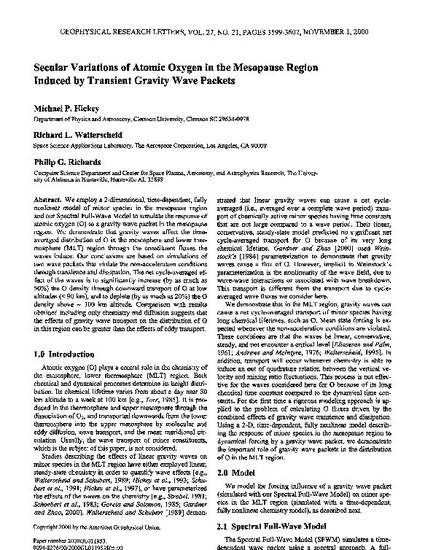
We employ a 2-dimensional, time-dependent, fully nonlinear model of minor species in the mesopause region and our Spectral Full-Wave Model to simulate the response of atomic oxygen (O) to a gravity wave packet in the mesopause region. We demonstrate that gravity waves affect the time-averaged distribution of O in the mesosphere and lower thermosphere (MLT) region through the constituent fluxes the waves induce. Our conclusions are based on simulations of two wave packets that violate the non-acceleration conditions through transience and dissipation. The net cycle-averaged effect of the waves is to significantly increase (by as much as 50%) the O density through downward transport of O at low altitudes (≤90 km), and to deplete (by as much as 20%) the O density above ∼100 km altitude. Comparison with results obtained including only chemistry and diffusion suggests that the effects of gravity wave transport on the distribution of O in this region can be greater than the effects of eddy transport.
